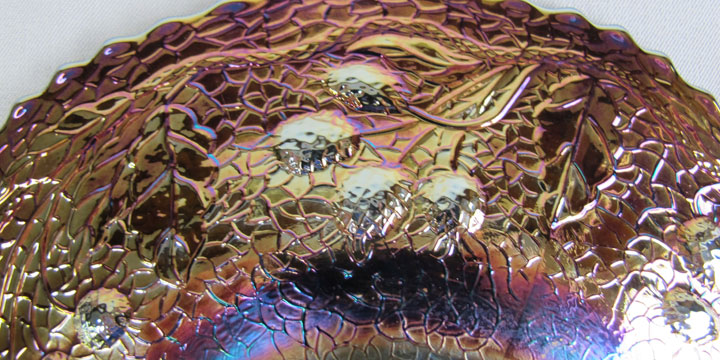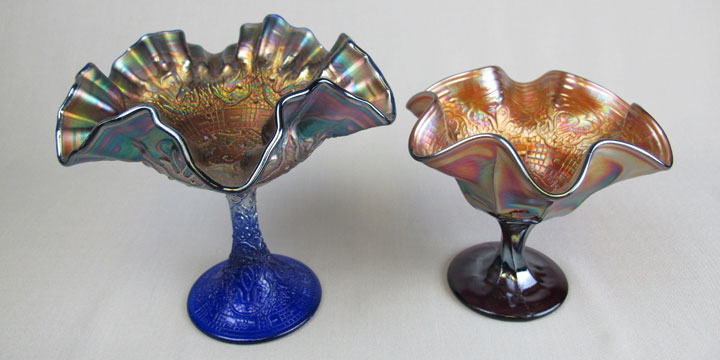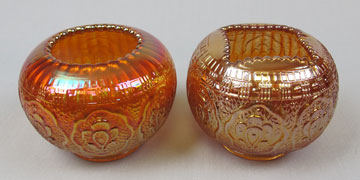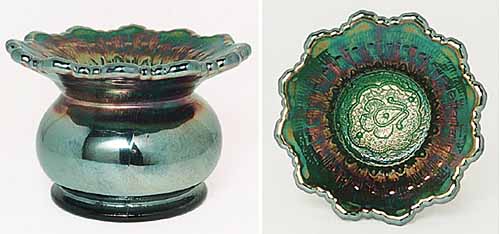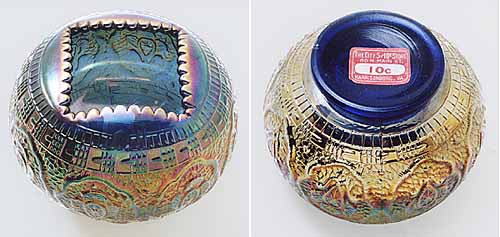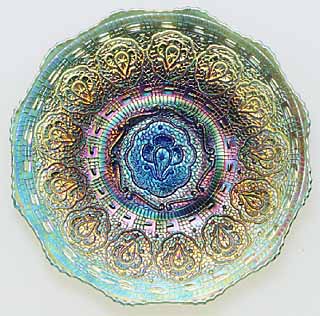
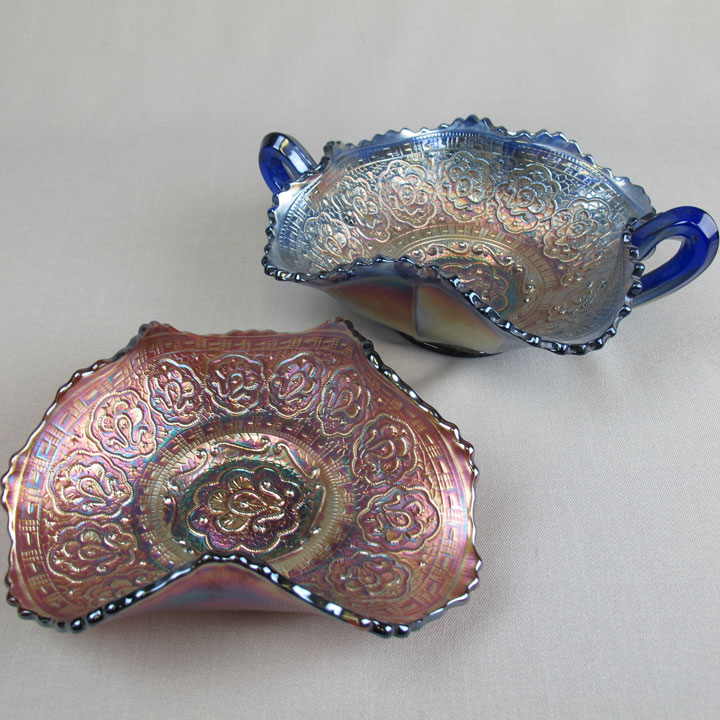
Also found in rosebowls, hair receivers and compotes discussed below. Several sizes of bowls are also available. Large bowls, about 10 inches across, can be found with ruffled, 3n1 or candy ribbon edges. Standard bowls are about 8 1/2 inches across and are found in CRE, 3n1, ICS and ruffled shapes. Medium sized bowls are about 7 inches across. Small sauces are about 6 inches across and are found ICS, ruffled or tri-corner shaped. A tri-corner sauce is shown in the photo above. Most pieces, except bonbons, are found in amethyst, blue, green, marigold or white.
The Persian Medallion pattern was used on the interior of some Wreath of Roses punch sets and Fenton's Grape and Cable Large Fruit Bowls.
Fenton reissued Persian Medallion plates, bowls, goblets, and compotes.
Amethyst Persian Medallion plates were one of the first reissues Fenton made. Some of these early plates did not have the Fenton logo. Because of this, they are often thought to be of the classic era. So, be very cautious when buying these amethyst plates--most are not old.
Glen Thistlewood, in commenting about these amethyst/purple 9-inch plates, says "The one in current consideration has a Bearded Berry back -- and the pattern is very different from the old version of Bearded Berry. On the old one, the fruits and stem are set onto a plain background. (See photo below to the left) But on the newer re-issue, there is a complex "scale-filler" everywhere." (See photo below to the right)

